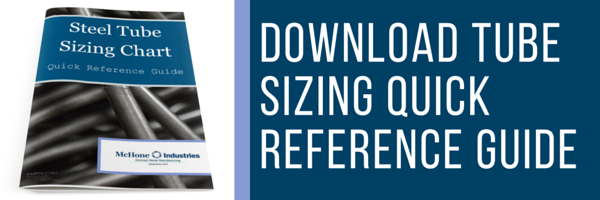
Keeping manufacturing costs down is always important. No one wants to spend more than they have to? You know that. And your boss knows that.
But perhaps one thing you both didn’t know is that a simple way to head-off any financial waste is to understand the standard sizes of the materials you’ll use.
This is especially true when designing a sheet metal project. If your daughter used 50 sheets of construction paper to make valentines for her class, but only used 20% of each piece, you’d be annoyed, right? The same principle applies with metal sheets.
With a firm grasp of standard sheet metal sizes, you can ensure your project uses as many other standardized materials as possible. This helps you avoid the unnecessary expense of scrap waste and customized manufacturing that are inevitable when you don’t take standard sizes of sheet metal into account.
The Basics of Standard Sheet Metal Sizes
Let’s get the nuts and bolts out of the way.
Sheet metal is created using any one of a variety of metals. Your material of choice is formed into thin sheets using a process that creates standardized pieces of specific thicknesses. Although steel -- primarily stainless or galvanized -- is probably the most widely used type of sheet metal for industrial applications, it is possible to obtain sheets made of other types of metals, such as:
- Brass
- Copper
- Aluminum
- Tin
- Titanium
- Nickel
- Platinum
- Gold
- Silver
Keep in mind, different metals have different properties that directly impact your project. In other words, not all metals are the same when it comes to things like strength and durability. Choose carefully.
Sheet and Plates -- Not One in the Same
Buyer beware. Though sometimes used interchangeably, sheet metal and plate metal are not the same thing. And they’re certainly not the same as foil.
The difference(s)?
Generally, sheet metal is considered anything thinner than about 0.25”. Beyond 0.25” the material is referred to as plate metal. And the thinnest sheets of metal are referred to as foil.
4 Factors to Consider with Sheet Metal Sizes
There are several factors you should consider when dealing with sheet metal sizing. These include:
- Gauge
- Thickness
- Weight
- Size specifications
1. GAUGE
While most of the world measures sheet metal thickness in millimeters, in the United States sheet metal thickness is measured in gauges. The larger the gauge number, the thinner the sheet. Conversely, the smaller the gauge number, the thicker the sheet. The standards used to develop the sheet metal gauge size system were based on the weight of material in a specific size sheet.
2. THICKNESS
The thickness of sheet metal is something to consider not only due to the cost of material but also the amount of work required to cut the sheet. That’s not to mention the material’s thickness necessary for any bends.
Thicker sheets are harder to cut, and bends require sheets of approximately 1x or thicker than the radii of inside bends to avoid cracking or warping.
3. WEIGHT
Every sheet of a specific gauge has a specific weight. In the U.S., the weight is measured using pounds-per-square foot. In Europe and many other parts of the world, the weight is measured in kilograms-per-square meter.
4. SIZE SPECIFICATIONS
There are a variety of standard sheet metal sizes, including:
- 36” x 96”
- 36” x 120”
- 36” x 144”
- 48” x 96”
- 48” x 120”
- 48” x 144”
Designing for Fabrication
While it’s definitely possible to find a fabricator who can deal with custom orders, the fact is ... saving money requires easy reproducibility.
If the fabricator can use standard sheet sizes and stick to cutting methods like basic laser cutting and roll forming sheet metal, then the cost of your order will be lower. If you can keep costs down, it is easier to justify improvements like powder coating, a fancier metal, etc.
The easiest way to determine if your design is ideal for fabrication is to talk with your sheet metal fabricator. Manufacturing partners should be happy to give you tips for keeping costs down and making fabrication as straightforward as possible. In many cases, they save money themselves by saving you money!
Sheet Metal Sizes: Knowledge is Power
Understanding standard sheet metal sizes represents more than saving money.
With a command over standard sheet metal sizes, you’ll save time designing projects and making them a reality. And you’ll have the confidence that the final product will work as it’s supposed to.
When it comes time to find a vendor or manufacturer, you’ll have a much easier time getting down to the brass tacks and choosing the right partner.
Familiarizing yourself with the finer points of standard sheet metal sizes is indeed an investment.
(This article was originally published in December 2018 and was recently updated.)


